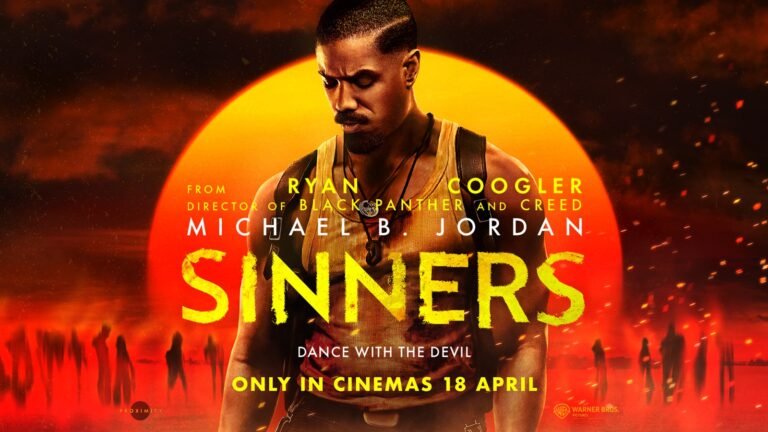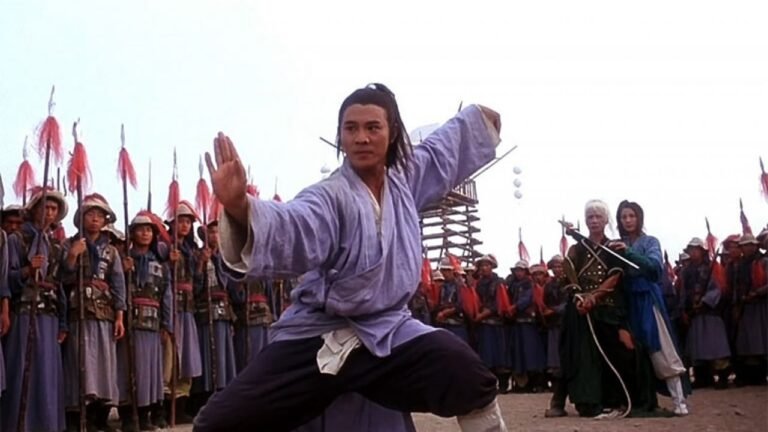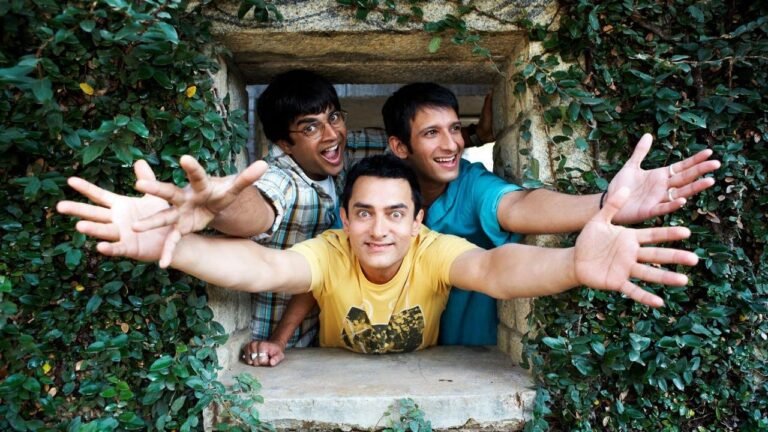
“The Great Battle” is a 2018 South Korean historical action film directed by Kim Kwang-sik and starring Jo In-sung, Nam Joo-hyuk, Park Sung-woong, and Bae Seong-woo. The film is based on the historic Siege of Ansi, a legendary 88-day battle where the Goguryeo defenders faced off against the formidable Tang dynasty. Set in 645 AD, this cinematic epic tells the story of loyalty, strategy, and heroism in the face of seemingly insurmountable odds. Let’s delve into an expansive review of this riveting historical saga.
The plot revolves around the experienced and charismatic General Yang Man-chun (Jo In-sung), who commands Ansi Fortress. Emperor Taizong of Tang (Park Sung-woong) leads a massive army to conquer Goguryeo, and the fortress of Ansi stands as a critical point of defense. Recognizing the importance of Ansi, the Tang army throws its full force against the fortress.
Yang Man-chun’s refusal to surrender and his strategic ingenuity become the lifeline for the vastly outnumbered Goguryeo soldiers and civilians. Despite facing betrayal, immense pressure, and critical shortages, General Yang and his men, including Sa-mul (Nam Joo-hyuk), an officer initially sent to kill Yang but who instead chooses to fight alongside him, hold their ground in a brutal and bloody siege. The film captures the intense battle sequences, the intimate moments of camaraderie, and the resilience of the human spirit amidst war.

Jo In-sung delivers a masterful performance as Yang Man-chun. His portrayal of the General is layered with stoicism, tactical brilliance, and a deep sense of duty. In-sung’s commanding screen presence perfectly aligns with Yang’s leadership qualities, offering a character who is not just a warrior but a protector and a father figure to his men. His emotional range, particularly in quieter moments of introspection and interaction with his soldiers, adds depth to the character.
Nam Joo-hyuk plays Sa-mul, a young officer whose character arc forms a significant subplot. Sent by his superiors to kill Yang to prevent him from capitulating to Tang, Sa-mul finds himself drawn to the General’s charisma and sense of justice. Nam’s performance effectively captures Sa-mul’s internal conflict and eventual transformation from a reluctant assassin to a dedicated warrior. His journey mirrors the overarching theme of loyalty and redemption.
Park Sung-woong portrays Emperor Taizong of Tang with a relentless and intimidating intensity. His character embodies the might and ambition of the Tang dynasty, serving as a formidable antagonist to General Yang. Park’s performance is chilling, as he exudes an air of supreme confidence and ruthlessness. The emperor’s strategic mind and unyielding resolve make him a compelling counterpart to Yang Man-chun.
The supporting cast, including Bae Seong- woo, Um Tae-goo, and Seol Hyun, each bring unique elements to the film. Bae Seong-woo as the loyal Chu-soo and Um Tae-goo as the fierce warrior Pa-so provide moments of levity and fierce loyalty, while Seol Hyun’s brief yet impactful role as Baek-ha adds a layer of personal stakes to the narrative. Their collective performances create a rich tapestry of characters that enhance the film’s emotional and narrative depth.

Director Kim Kwang-sik orchestrates “The Great Battle” with a keen eye for detail and a grand sense of scale. The cinematography by Nam Dong-geun captures the vastness of the battlefield and the imposing presence of Ansi Fortress. The wide, sweeping shots of the landscape, combined with close-up, visceral combat scenes, create a dichotomy of beauty and brutality. The use of natural lighting and dynamic camera angles enhances the immersive quality of the film, making the audience feel as though they are in the midst of the siege.
The action sequences in “The Great Battle” are nothing short of spectacular. The choreography of the battle scenes is intricate, intense, and realistic. From large-scale assaults and defense strategies to one-on-one duels, the film excels in depicting the chaos and savagery of war. The use of practical effects, complemented by CGI to depict vast armies and grandiose siege engines, strikes a balance that maintains the film’s authenticity while showcasing the scale of the conflict.
The attention to detail in set design and costumes is worthy of high praise. Ansi Fortress is brought to life with meticulous construction that reflects the architectural style of Goguryeo, and the costumes are crafted with historical accuracy. The armor, weapons, and attire worn by the characters not only add to the visual richness but also support the narrative by distinguishing the various factions and ranks within the enemy and defending armies.
The screenplay, written by Kim Kwang-sik, manages to weave historical facts with dramatic storytelling seamlessly. While drawing from the historical Siege of Ansi, the script introduces elements that add emotional depth and personal stakes. It navigates the challenges of adapting a real event for the screen by focusing on character development and the human aspects of the conflict, rather than solely on military tactics and historical outcomes.

One of the film’s strengths lies in its character development. Each main character is given a backstory and motivations that resonate with the audience. The dialogue is crafted to reflect the gravity of the situation, the personalities involved, and the cultural context. Moments of camaraderie, honour, and sacrifice are accentuated by powerful lines that linger long after the film ends. Yang Man-chun’s speeches are particularly inspiring, serving as rallying cries for his troops and encapsulating the themes of resilience and unity.
The film’s pacing is well-calibrated, balancing action-packed sequences with quieter, introspective moments. The narrative structure allows for an escalation of tension, building up to a climatic confrontation that is both emotionally and visually satisfying. The interweaving of individual story arcs within the larger context of the siege ensures that the audience remains engaged throughout the film’s runtime.
“The Great Battle” delves into themes of leadership, loyalty, sacrifice, and the human spirit’s endurance in adversity. It examines the intricacies of war, not just as a clash of armies but as a profound human experience that tests individuals and communities. The film also explores the idea of legacy and the impact of one’s actions on future generations, underscoring the timeless relevance of history.
Beyond the physical battles, the film delves into the emotional and psychological strains experienced by the characters. General Yang’s burden of leadership, Sa-mul’s moral dilemmas, and the soldiers’ fears and hopes add layers of depth that elevate the film from a mere historical recounting to a study of human resilience.
“The Great Battle” received positive reviews from critics and audiences alike. Critics praised the film for its epic scale, emotional depth, and historical authenticity. The performances, particularly those of Jo In-sung and Nam Joo-hyuk, were lauded for their intensity and sincerity. The film was appreciated for its ability to blend thrilling action with engaging human drama.
Audiences responded to the film’s rousing depiction of heroism and its immersive battle sequences. The portrayal of General Yang Man-chun became a point of pride, celebrating a legendary figure from Korean history.

The film performed well at the box office, becoming a commercial success in South Korea. Its appeal extended beyond historical drama enthusiasts, drawing viewers from various demographics, thus solidifying its status as a significant entry in the genre of historical action films.
“The Great Battle” stands as a formidable entry in the realm of historical epics, distinguished by its rich characterizations, breathtaking action sequences, and the emotive portrayal of a pivotal moment in history. Director Kim Kwang-sik’s vision, combined with stellar performances, particularly by Jo In-sung, brings to life a story that is both grand in scale and deeply personal.
For anyone intrigued by historical dramas, grand battle scenes, or tales of unyielding human spirit, “The Great Battle” offers a cinematic experience that is as inspiring as it is entertaining. It is a film that not only recounts history but also celebrates the timeless virtues of bravery, loyalty, and resilience, making it a compelling watch even for those unfamiliar with the historical background of the Siege of Ansi.




